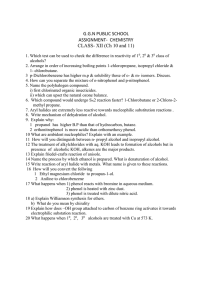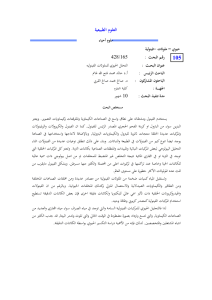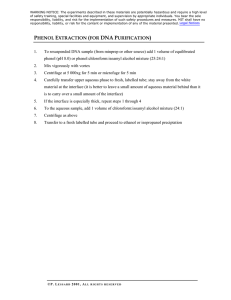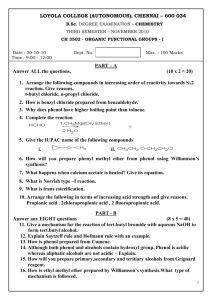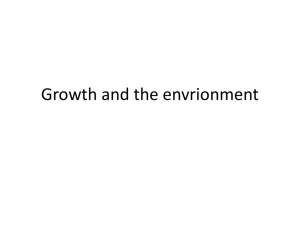1 Environmental pollution has been considered as a side effect of... Soil, lakes, rivers, and seas are highly contaminated with different... CHAPTER 1
advertisement
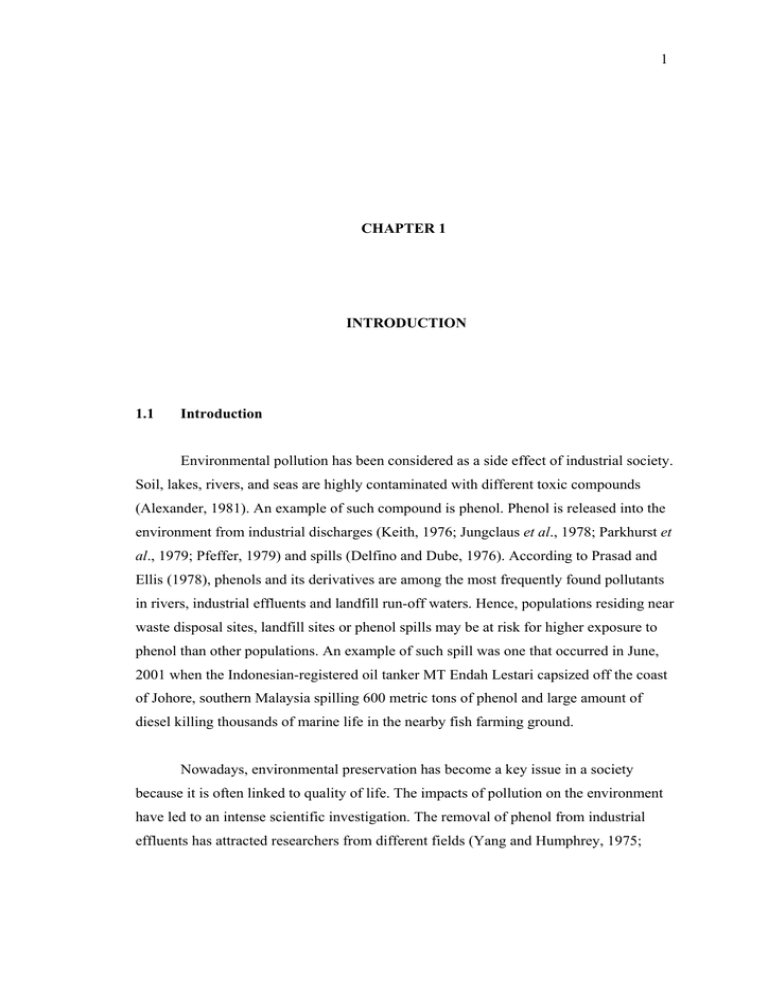
1 CHAPTER 1 INTRODUCTION 1.1 Introduction Environmental pollution has been considered as a side effect of industrial society. Soil, lakes, rivers, and seas are highly contaminated with different toxic compounds (Alexander, 1981). An example of such compound is phenol. Phenol is released into the environment from industrial discharges (Keith, 1976; Jungclaus et al., 1978; Parkhurst et al., 1979; Pfeffer, 1979) and spills (Delfino and Dube, 1976). According to Prasad and Ellis (1978), phenols and its derivatives are among the most frequently found pollutants in rivers, industrial effluents and landfill run-off waters. Hence, populations residing near waste disposal sites, landfill sites or phenol spills may be at risk for higher exposure to phenol than other populations. An example of such spill was one that occurred in June, 2001 when the Indonesian-registered oil tanker MT Endah Lestari capsized off the coast of Johore, southern Malaysia spilling 600 metric tons of phenol and large amount of diesel killing thousands of marine life in the nearby fish farming ground. Nowadays, environmental preservation has become a key issue in a society because it is often linked to quality of life. The impacts of pollution on the environment have led to an intense scientific investigation. The removal of phenol from industrial effluents has attracted researchers from different fields (Yang and Humphrey, 1975; 2 Shingler, 1996). The increasing awareness on the environment in both developed and developing countries has initiated more studies of possible solutions for treating phenol. Environmental biotechnology relies on the pollutant-degrading capacities of naturally occurring microorganisms (Liu and Suflita, 1993). It has been reported to be advantageous over physical and chemical treatments due to its relatively low cost and has less ecological impact to the environment (Head, 1998; Edington, 1994). Researchers are studying pollutant-degrading microorganisms which inhabit polluted environments (Kumaran, 1980; Kapoor et al., 1998; Yap et al., 1999; Heinaru et al., 2000; Komarkova et al., 2003; Santos and Linardi, 2004; Margesin et al., 2005) as well as uncontaminated environment (Bastos et al., 2000a; Koutny et al., 2003). Harnessing the potential of microbes (Ahmed, 1995; Fulthorpe and Allen, 1995; Bastos et al., 2000b; Ruiz- Ordaz et al., 2001; Vojta et al., 2002; Páca Jr. et al., 2003) to degrade phenol has been an area of considerable study to develop bioremediation approaches which has been considered as a “green option” (Singleton, 1994) for treatment of environmental contaminants. Many researchers support the biological treatment of phenols. A number of studies with prokaryotic microorganisms have been carried out for the purpose to improve the technological processes of biodegradation. Some examples are, Pseudomonas sp. have demonstrated the ability to mineralize phenol (Ehrhardt and Rehm, 1989; Hinteregger et al., 1992; Ahmed, 1995; Chitra et al., 1995; Dapaah and Hill, 1992; Fulthorpe and Allen,1995; Fava et al., 1995; Loh and Wang, 1998), Alcaligenes sp. (Hill et al., 1996; Valenzuela et al., 1997), Azotobacter sp. (Li et al., 1991), Rhodococcus sp. (Apajalahti and Salkinoja-Salonen, 1986; Oh and Han, 1997), Phanerochaete sp. (Perez et al., 1997; Larmar et al., 1990), and Cryptococcus sp. (Mörsen and Rehm, 1987). However, according to Katayama-Hirayama et al., (1994) information on degradation of phenol is limited in the yeast strains. Among the eukaryotic microorganisms, only some members of yeast genera Candida, Rhodotorula, and Trichosporon that able to metabolize phenolic compounds as a sole carbon and energy 3 source (Neujahr, 1990; Katayama-Hirayama et al. 1994; Chen et al., 2002). Among the Candida strain, Candida tropicalis has been the most studied in the biodegradation of phenol (Shimizu et al., 1973; Kumaran, 1980; Krug et al., 1985; Bastos et al., 2000a; Chen et al., 2002; Vojta et al., 2002; Yan et al., 2005). However, none of these yeast strains were isolated from Malaysian environment. Studies on the naturally pollutant-degrading microorganisms termed as environmentally relevant microorganisms (ERM), include the isolation of bacteria from the environment, their classification and physiological characterization, molecular analysis of their degradative enzymes (Watanabe and Baker, 2000). Biodegradation of phenol by many microorganisms has been studied in order to understand the nutrient requirements, environmental physico-chemical factors, and complex biochemistry involved that may assist in bioremediation of this toxic compound. 1.2 Objectives of the study The aim of this study is to investigate the ability of locally isolated microorganisms to degrade phenol with the specific objectives listed below: 1. To isolate, screen and identify phenol-degrading microorganisms from oil, waxy oil and petrochemical wastes. 2. To optimize and conduct kinetic analyses on the aerobic phenol biodegradation in batch and fed-batch cultures by potential strains. 3. To postulate possible metabolic pathway of phenol degradation by the microorganism of interest. 4 4. To identify the potential strain by a molecular mechanisms (PCR amplification of ribosomal DNA targeting the conserved regions of 5.8S, 18S and 28S using universal primers ITS1 and ITS4).


